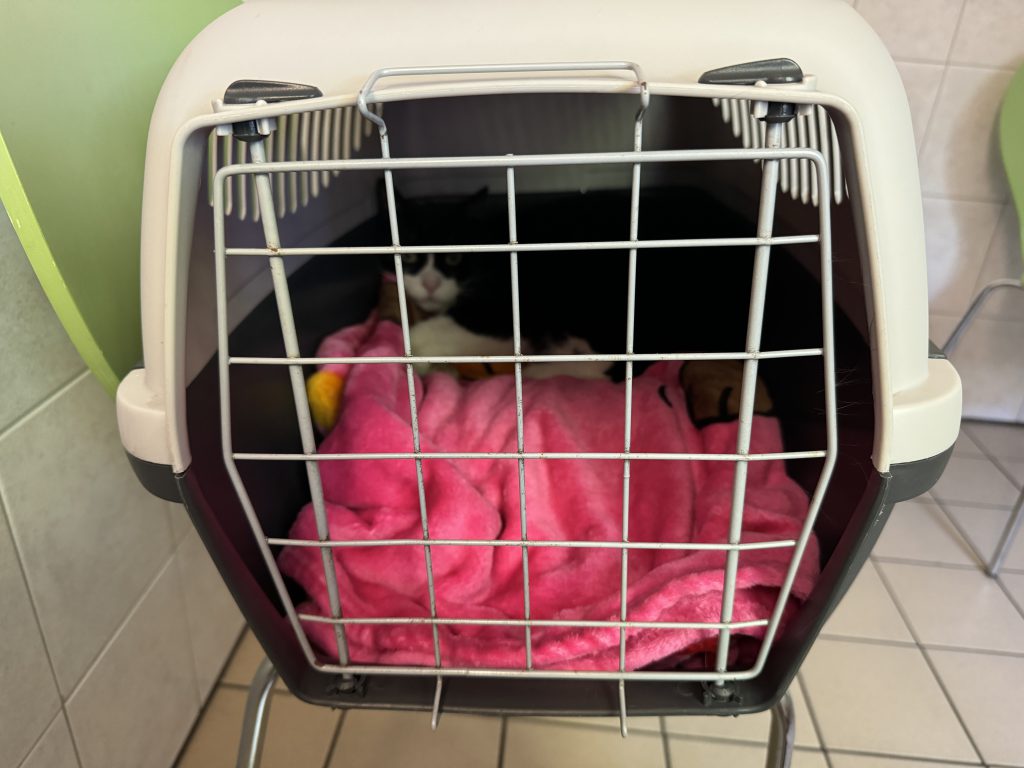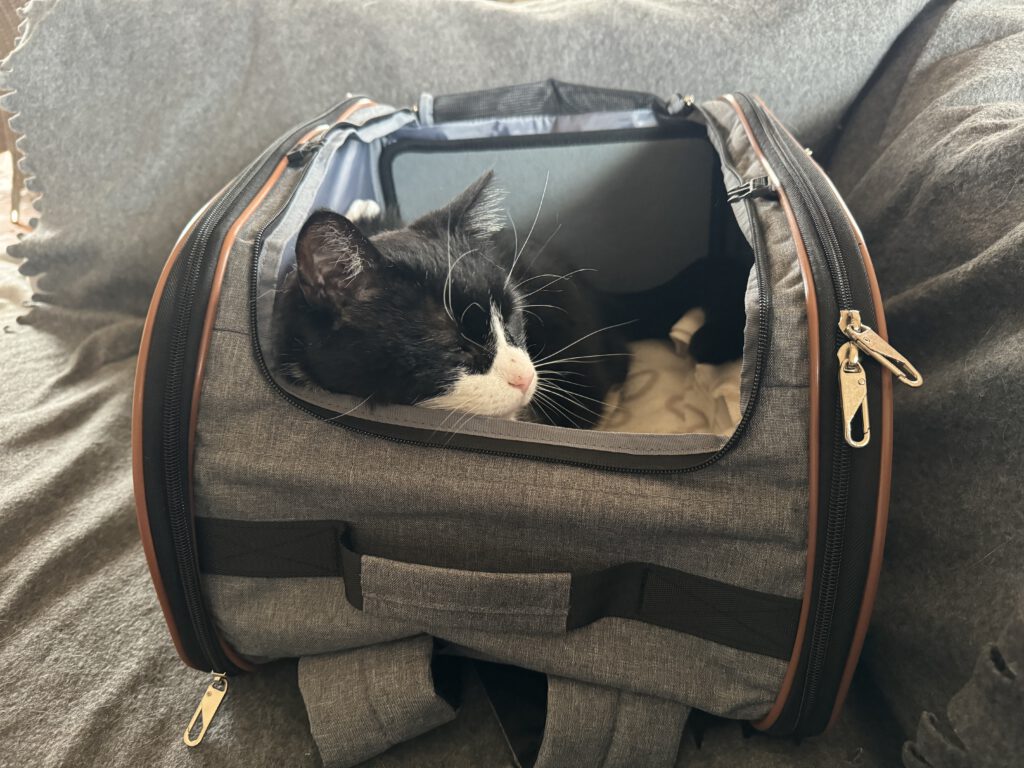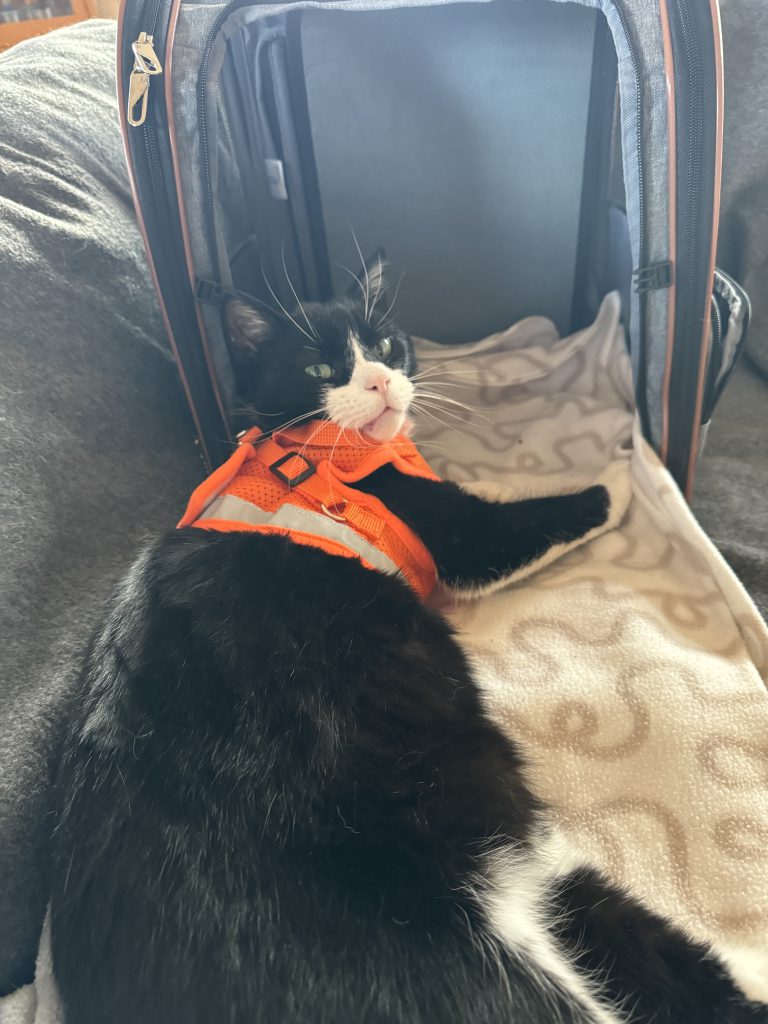When a cat goes travelling, a few formalities are required. The Federal Ministry of Food and Agriculture provides good information on its website. But you can also find good information on private websites such as Pets on Tour.
Every animal needs a „passport“. This records identification features such as appearance and chip number, as well as important vaccination records, particularly against rabies. So that Lucky the cat can move on board with us and explore foreign countries with us, we have had a European pet passport issued by our vet. Many thanks to the small animal practice in Daverden, who not only vaccinated Lucky, but also provided us with a first-aid kit for him.

With the European pet passport, travelling to most European countries should not be a problem for Lucky. Ireland, Malta and Finland have stricter requirements for antiparasitic treatment, especially against tapeworms. But these countries are not on our cruise plan for the time being. And unfortunately, Great Britain is also currently ruled out as a cruise destination. Different conditions apply for travelling to non-European countries and possibly for re-entry into Europe, which we will have to find out on a case-by-case basis.
For example, in some countries, such as New Zealand, quarantine conditions must be observed. In some cases, there is also a ban on bringing the animal ashore, meaning that Lucky is only allowed to stay on board. In any case, Lucky must be cleared for entry, just like any other crew member.
We gave a lot of thought to how we could get Lucky on board in the first place. A long flight seemed completely unreasonable for Lucky. Even a short flight would probably cause some complications. Lucky would probably fly with us in the cabin. Well secured in a transport bag, of course. However, it is recommended that animals are not given tranquillisers on flights, as this would lead to Lucky meowing loudly in the cabin for the entire duration of the flight.
When looking for a suitable catamaran for us, we therefore initially focussed on boats in Europe that we could reach by car in a reasonable time or that we could sail to a suitable range quickly. When travelling by car, a cat must be secured in an appropriate transport box. In addition, food, water and, for longer journeys, a litter tray should of course be available. It is also recommended that you travel at night if possible to minimise the stress caused to the animal by traffic jams or heat. And, of course, no animal should simply be left in a parked car in the blazing sun.
Since, unlike travelling by plane, you are allowed to administer sedatives to the animal, we thought it was perfectly reasonable for Lucky to travel by car. And so that Lucky would be as comfortable as possible in the car, we looked around for a special transport rucksack. This can be extended so that Lucky has a little space to run around and can reach his litter tray if necessary. This leaves less space in the car to transport other things on board, but Lucky would have been nice and cosy during the journey.
So that Lucky could get used to his new transport rucksack, we bought it long beforehand and set it up in the living room as a possible cosy place to lie down. As there were always tasty treats to be found there, we were able to get Lucky used to the new berth quite quickly.

At least that’s the theory! Now that we have found a berth for our catamaran „La Ola“ quite close by, Lucky „only“ has to survive a transport to Cuxhaven. Nevertheless, we are very sure that Lucky will hate the transport. So far he only knows the transport box from visits to the vet. Worse still, before we adopted him from the shelter, he was caught as a stray, neutered and sent to prison. These are not fond memories. We still hope that he will forgive us for transporting him on board and that things will turn out well for him in the end. And luckily we only have a 90-minute journey to Cuxhaven, so we should be able to put up with the whining in the car.
We also tried to get Lucky used to a cat harness and lead. The whole endeavour was supported by a pheromone spray, which supposedly makes cats super calm and quiet. The attempts to put the cat harness on Lucky went quite well – at least as long as he was in sleep/rest mode anyway. As soon as he became active and wanted to get up, it became more difficult. Apparently the harness was so unfamiliar that Lucky was unable to move normally in it. He kept bending his legs or walking backwards. The attempts were therefore always cancelled after a short time and then repeated the next day. Step by step, things improved and we are hopeful that Lucky will be able to go ashore safely in the future with the help of the lead and harness.
We also bought him a Tractive tracker, which he now wears on his collar as he walks around the neighbourhood. We can now follow his paths through the neighbourhood live and in real time. It’s quite funny to see where the little cat goes! And luckily his path never takes him across the road, so at least we don’t have to worry about him getting run over.

